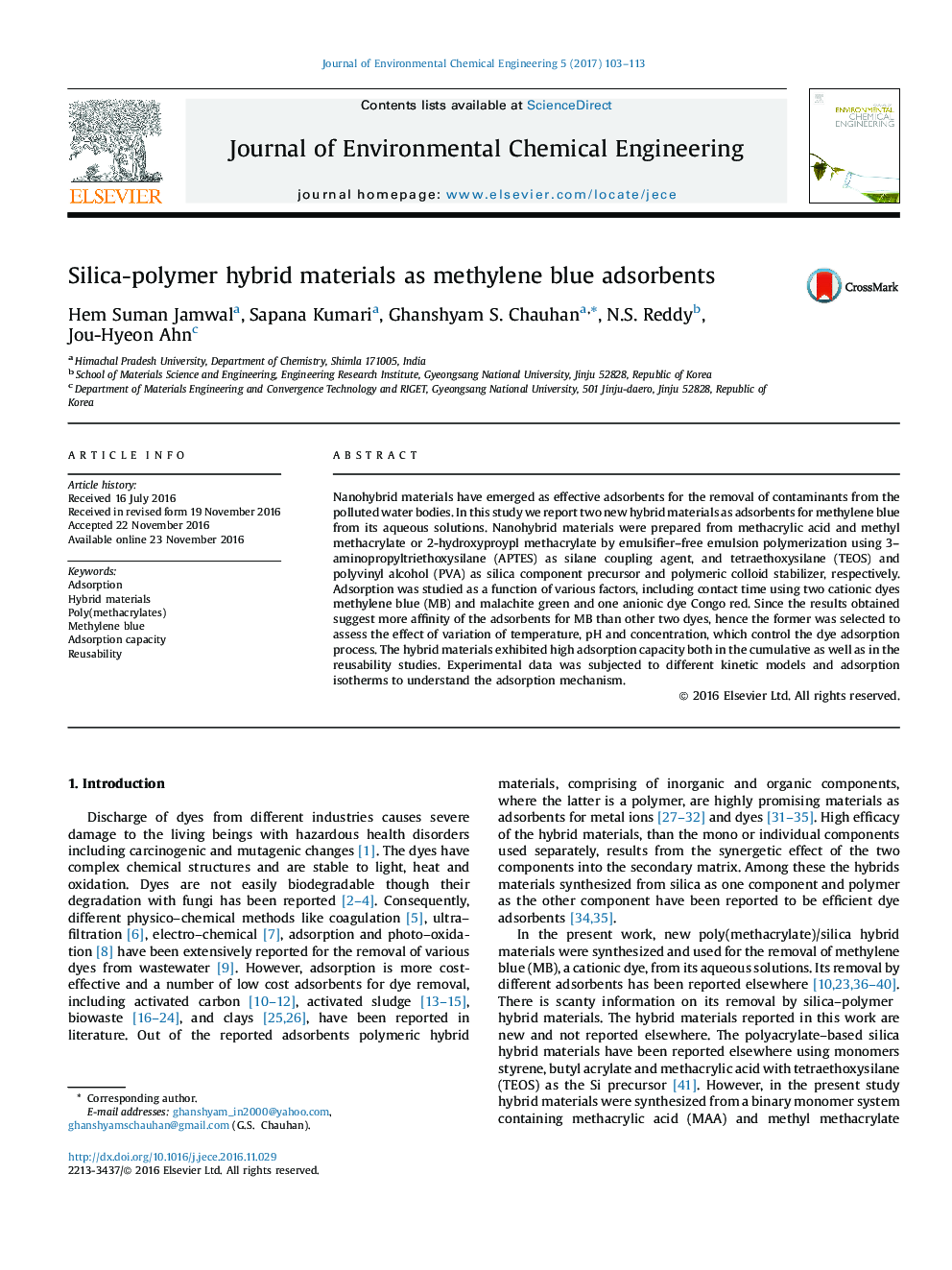| کد مقاله | کد نشریه | سال انتشار | مقاله انگلیسی | نسخه تمام متن |
|---|---|---|---|---|
| 6477277 | 1362584 | 2017 | 11 صفحه PDF | دانلود رایگان |
- New poly(methacrylate)/silica nanohybrid were synthesized by emulsifier-free emulsion polymerization.
- Synthesized materials were used as methylene blue (MB) adsorbents following a parametric framework.
- Materials exhibited high maximum adsorption capacity between 56.625 and 91.324 mg g â1 under optimum conditions.
- Materials are reusable.
Nanohybrid materials have emerged as effective adsorbents for the removal of contaminants from the polluted water bodies. In this study we report two new hybrid materials as adsorbents for methylene blue from its aqueous solutions. Nanohybrid materials were prepared from methacrylic acid and methyl methacrylate or 2-hydroxyproypl methacrylate by emulsifier-free emulsion polymerization using 3-aminopropyltriethoxysilane (APTES) as silane coupling agent, and tetraethoxysilane (TEOS) and polyvinyl alcohol (PVA) as silica component precursor and polymeric colloid stabilizer, respectively. Adsorption was studied as a function of various factors, including contact time using two cationic dyes methylene blue (MB) and malachite green and one anionic dye Congo red. Since the results obtained suggest more affinity of the adsorbents for MB than other two dyes, hence the former was selected to assess the effect of variation of temperature, pH and concentration, which control the dye adsorption process. The hybrid materials exhibited high adsorption capacity both in the cumulative as well as in the reusability studies. Experimental data was subjected to different kinetic models and adsorption isotherms to understand the adsorption mechanism.
122
Journal: Journal of Environmental Chemical Engineering - Volume 5, Issue 1, February 2017, Pages 103-113
